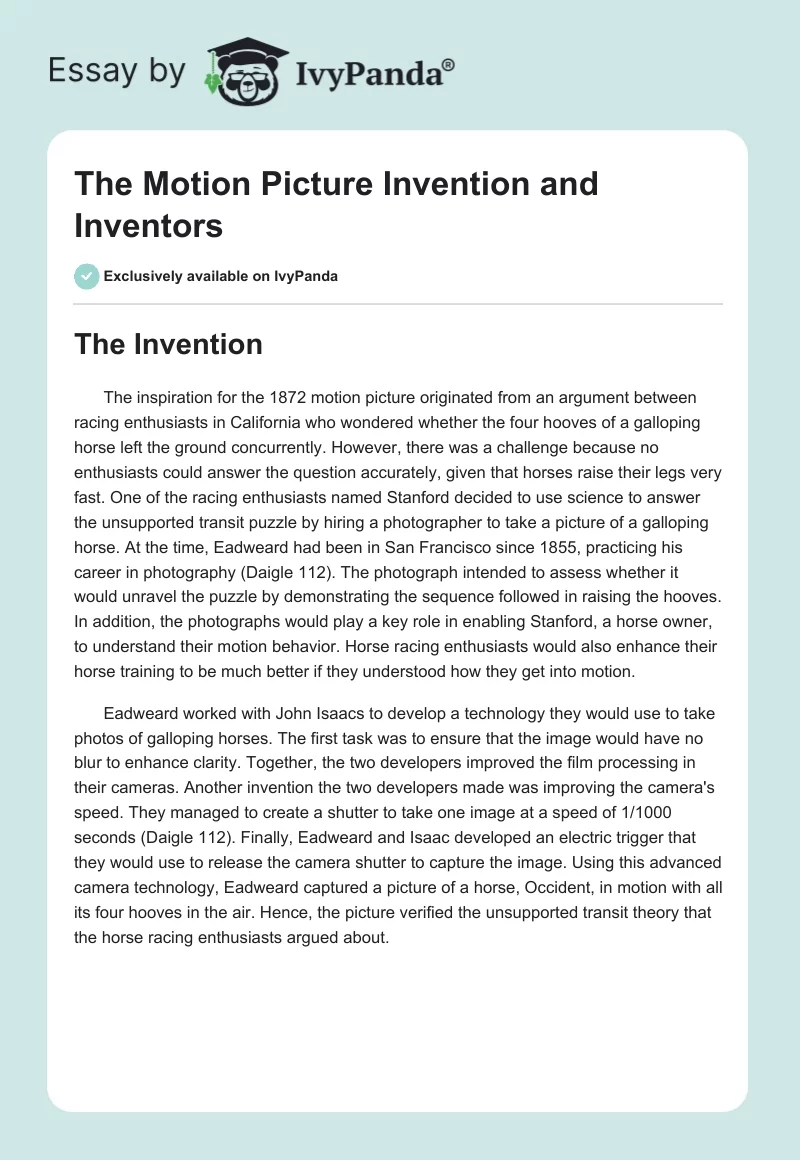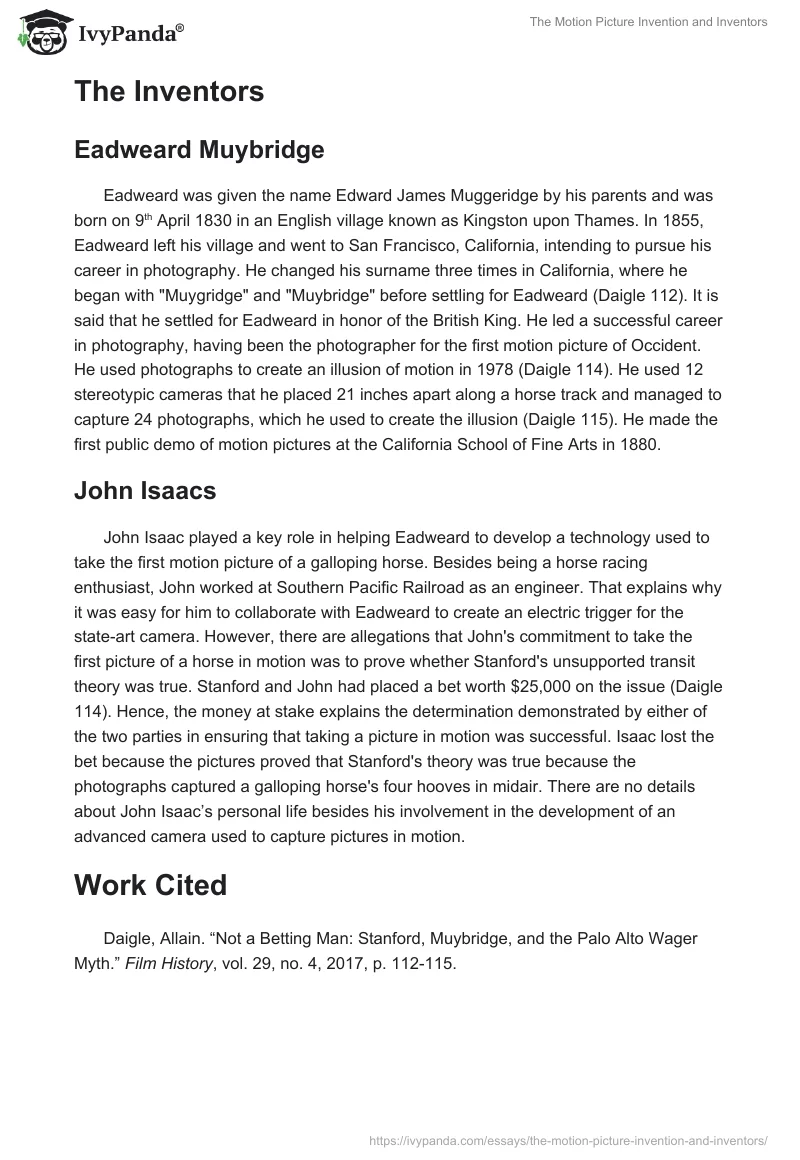The Invention
The inspiration for the 1872 motion picture originated from an argument between racing enthusiasts in California who wondered whether the four hooves of a galloping horse left the ground concurrently. However, there was a challenge because no enthusiasts could answer the question accurately, given that horses raise their legs very fast. One of the racing enthusiasts named Stanford decided to use science to answer the unsupported transit puzzle by hiring a photographer to take a picture of a galloping horse. At the time, Eadweard had been in San Francisco since 1855, practicing his career in photography (Daigle 112). The photograph intended to assess whether it would unravel the puzzle by demonstrating the sequence followed in raising the hooves. In addition, the photographs would play a key role in enabling Stanford, a horse owner, to understand their motion behavior. Horse racing enthusiasts would also enhance their horse training to be much better if they understood how they get into motion.
Eadweard worked with John Isaacs to develop a technology they would use to take photos of galloping horses. The first task was to ensure that the image would have no blur to enhance clarity. Together, the two developers improved the film processing in their cameras. Another invention the two developers made was improving the camera’s speed. They managed to create a shutter to take one image at a speed of 1/1000 seconds (Daigle 112). Finally, Eadweard and Isaac developed an electric trigger that they would use to release the camera shutter to capture the image. Using this advanced camera technology, Eadweard captured a picture of a horse, Occident, in motion with all its four hooves in the air. Hence, the picture verified the unsupported transit theory that the horse racing enthusiasts argued about.
The Inventors
Eadweard Muybridge
Eadweard was given the name Edward James Muggeridge by his parents and was born on 9th April 1830 in an English village known as Kingston upon Thames. In 1855, Eadweard left his village and went to San Francisco, California, intending to pursue his career in photography. He changed his surname three times in California, where he began with “Muygridge” and “Muybridge” before settling for Eadweard (Daigle 112). It is said that he settled for Eadweard in honor of the British King. He led a successful career in photography, having been the photographer for the first motion picture of Occident. He used photographs to create an illusion of motion in 1978 (Daigle 114). He used 12 stereotypic cameras that he placed 21 inches apart along a horse track and managed to capture 24 photographs, which he used to create the illusion (Daigle 115). He made the first public demo of motion pictures at the California School of Fine Arts in 1880.
John Isaacs
John Isaac played a key role in helping Eadweard to develop a technology used to take the first motion picture of a galloping horse. Besides being a horse racing enthusiast, John worked at Southern Pacific Railroad as an engineer. That explains why it was easy for him to collaborate with Eadweard to create an electric trigger for the state-art camera. However, there are allegations that John’s commitment to take the first picture of a horse in motion was to prove whether Stanford’s unsupported transit theory was true. Stanford and John had placed a bet worth $25,000 on the issue (Daigle 114). Hence, the money at stake explains the determination demonstrated by either of the two parties in ensuring that taking a picture in motion was successful. Isaac lost the bet because the pictures proved that Stanford’s theory was true because the photographs captured a galloping horse’s four hooves in midair. There are no details about John Isaac’s personal life besides his involvement in the development of an advanced camera used to capture pictures in motion.
Work Cited
Daigle, Allain. “Not a Betting Man: Stanford, Muybridge, and the Palo Alto Wager Myth.” Film History, vol. 29, no. 4, 2017, p. 112-115.


